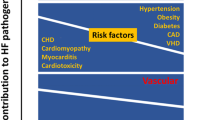Abstract
Background
The impact of obstructive sleep apnea (OSA) on the development of atherosclerotic cardiovascular disease (CVD) in the absence of overt CVD or risk factors is unclear. Our purpose was to assess whether patients with OSA without overt CVD or risk factors have subclinical atherosclerosis as evaluated by carotid intima medial thickness (CIMT) compared to matched controls.
Methods
We measured CIMT in patients >40 years old, who underwent polysomnography for suspected OSA and did not have a history of CVD or risk factors (smoking, hypertension, diabetes, hyperlipidemia). OSA severity was classified according to apnea–hypopnea index. Serum levels of high-sensitivity C-reactive protein, fibrinogen, and lipids were assessed and relationships with OSA severity explored. CIMT measurements from patients with OSA were compared those of to age-, gender-, and BMI-matched controls from a community-based cohort without known CVD or OSA.
Results
Fifty-one patients were studied. Of these, patients with severe OSA had an increased CIMT compared to patients without OSA, but the relationship was not significant after controlling for age (p = 0.10). However, 37 patients had OSA and were matched to 105 controls. CIMT was significantly increased in OSA patients versus controls (0.77 vs. 0.68 mm, p = 0.03). The difference between patients and controls was greater for patients with severe OSA (0.83 vs. 0.71 mm) than for patients with mild-to-moderate OSA (0.71 vs. 0.67 mm).
Conclusions
Patients with OSA but without a history of or risk factors for CVD have increased CIMT compared to a BMI-, age-, and gender-matched cohort. This provides evidence that OSA is an independent risk factor for the development of CVD.


Similar content being viewed by others
References
Leung RS, Bradley TD (2001) Sleep apnea and cardiovascular disease. Am J Respir Crit Care Med 164(12):2147–2165
Young T, Peppard PE, Gottlieb DJ (2002) Epidemiology of obstructive sleep apnea: a population health perspective. Am J Respir Crit Care Med 165(9):1217–1239
Marin JM, Carrizo SJ, Vicente E, Agusti AGN (2005) Long-term cardiovascular outcomes in men with obstructive sleep apnoea–hypopnoea with or without treatment with continuous positive airway pressure: an observational study. Lancet 365:1046–1053
Bounhoure JP, Galinier M, Didier A, Leophonte P (2005) Sleep apnea syndromes and cardiovascular disease. Bull Acad Natl Med 189(3):445–459 (discussion 460–464)
Mancini GB, Dahlof B, Diez J (2004) Surrogate markers for cardiovascular disease: structural markers. Circulation 109(25 Suppl 1):IV22–IV30
Chambless LE, Heiss G, Folsom AR, Rosamond W, Szklo M, Sharrett AR, Clegg LX (1997) Association of coronary heart disease incidence with carotid arterial wall thickness and major risk factors: the Atherosclerosis Risk in Communities (ARIC) Study, 1987–1993. Am J Epidemiol 146(6):483–494
Hodis HN, Mack WJ, LaBree L, Selzer RH, Liu C, Liu C, Alaupovic P, Kwong-Fu H, Azen SP (1996) Reduction in carotid arterial wall thickness using lovastatin and dietary therapy: a randomized controlled clinical trial. Ann Intern Med 124(6):548–556
Taylor AJ, Kent SM, Flaherty PJ, Coyle LC, Markwood TT, Vernalis MN (2002) ARBITER: arterial biology for the investigation of the treatment effects of reducing cholesterol: a randomized trial comparing the effects of atorvastatin and pravastatin on carotid intima medial thickness. Circulation 106(16):2055–2060
American Academy of Sleep Medicine (1999) Sleep-related breathing disorders in adults: recommendations for syndrome definition and measurement techniques in clinical research. The Report of an American Academy of Sleep Medicine Task Force. Sleep 22:667–689
Mancini GB, Abbott D, Kamimura C, Yeoh E (2004) Validation of a new ultrasound method for the measurement of carotid artery intima medial thickness and plaque dimensions. Can J Cardiol 20(13):1355–1359
Lear SA, Humphries KH, Kohli S, Frohlich JJ, Birmingham CL, Mancini GB (2007) Visceral adipose tissue, a potential risk factor for carotid atherosclerosis: results of the Multicultural Community Health Assessment Trial (M-CHAT). Stroke 38(9):2422–2429
Bergstralh EJ, Kosanke JL (1995) Computerized matching of controls. Technical Report Series No. 56, Department of Health Science Research, Mayo Clinic, Rochester
Silvestrini M, Rizzato B, Placidi F, Baruffaldi R, Bianconi A, Diomedi M (2002) Carotid artery wall thickness in patients with obstructive sleep apnea syndrome. Stroke 33(7):1782–1785
Suzuki T, Nakano H, Maekawa J, Okamoto Y, Ohnishi Y, Yamauchi M, Kimura H (2004) Obstructive sleep apnea and carotid-artery intima-media thickness. Sleep 27:129–133
Campos-Rodriguez F, Martinez-Garcia MA, Cruz-Moron I, Almeida-Gonzalez C, Catalan-Serra P, Montserrat JM (2012) Cardiovascular mortality in women with obstructive sleep apnea with or without continuous positive airway pressure treatment. Ann Intern Med 156:115–122
Peppard PE, Young T, Palta M, Skatrud J (2000) Prospective study of the association between sleep-disordered breathing and hypertension. N Engl J Med 342(19):1378–1384
Minoguchi K, Yokoe T, Tanaka A, Ohta S, Hirano T, Yoshino G, O’Donnell CP, Adachi M (2006) Association between lipid peroxidation and inflammation in obstructive sleep apnoea. Eur Respir J 28(2):378–385
Acknowledgments
This study was funded by an operating grant from the Vancouver General Hospital Division of Cardiology CV Research Fund, and a Canadian Institutes of Health Research (CIHR) Sleep Team Grant. The M-CHAT cohort study was funded by CIHR. Dr. Ayas was supported by an Established Clinician Scientist Award from Vancouver Coastal Health Research Institute. Dr. Lear is the Pfizer/Heart and Stroke Foundation Chair in Cardiovascular Prevention Research at St. Paul’s Hospital.
Conflict of interest
The authors have no conflicts of interest to disclose.
Author information
Authors and Affiliations
Corresponding author
Rights and permissions
About this article
Cite this article
Fox, N., Ayas, N., Park, J.E. et al. Carotid Intima Media Thickness in Patients with Obstructive Sleep Apnea: Comparison with a Community-Based Cohort. Lung 192, 297–303 (2014). https://doi.org/10.1007/s00408-014-9556-y
Received:
Accepted:
Published:
Issue Date:
DOI: https://doi.org/10.1007/s00408-014-9556-y




